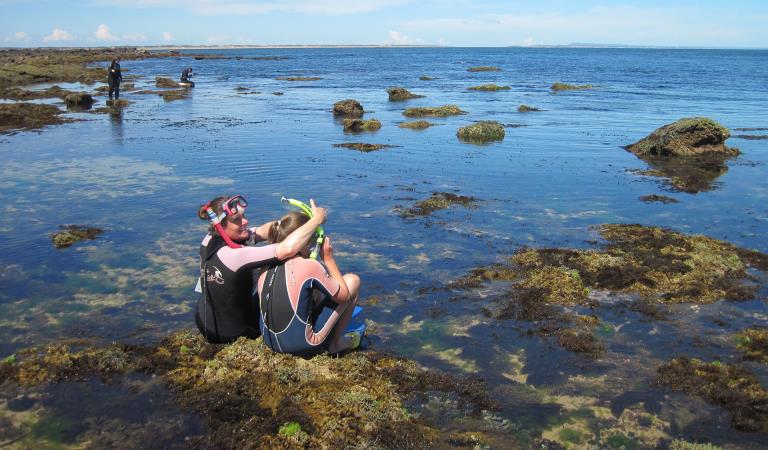Explore old shipwrecks and reefs teeming with marine life, including colourful corals, seahorses, crustaceans and stingrays with a dive down in Port Phillip. Melbourne's most accessible dive spot, Ricketts Point Marine Sanctuary is deservedly popular for snorkelling and diving, especially exploring the walls along the shoreline and the rubble at the edge of the reef for a wide variety of fish and invertebrate life. There is also a wheelchair friendly access ramp for the use of disabled divers. Named after its mushroom shaped reef, Mushroom Reef Marine Sanctuary protects 80ha of the open coast of Flinders on the Mornington Peninsula. Composed of sandstone rock platforms extending from the shore, the park includes sheltered rock pools, coves and a shallow reef on the ocean side. The reef is formed from ancient basalt which has weathered beautifully, allowing creatures to hide within crevices and cracks or under loose rocks.
Take a boat ride from Portsea or Queenscliff and dive the wreck of the HMAS Canberra. Explore the huge diversity of marine plant and animal life at Barwon Bluff Marine Sanctuary. Discover the intertidal and subtidal, basalt and sandstone reefs in Eagle Rock Marine Sanctuary that provide habitats for many species. The rock platforms are covered in the iconic brown seaweed Neptune's Necklace which is unique to Australia and New Zealand. Travel further west along the Great Ocean Road to Marengo Reefs Marine Sanctuary. This sanctuary protects a reef system known as Little Henty Reef. Two sections of the reef, the inner and outer reef, are usually exposed and separated by a narrow channel known as 'The Gap'. Composed of sandstone they support wonderful intertidal and subtidal reefs which are packed with sea life.
Marine life
Marine protected areas
Where to snorkel close to Melbourne: 5 best spots according to a marine park ranger
7 unexpected things found in our parks
Discover an underwater world
Meet some of our unique marine life
Change of Conditions
Nature being nature, sometimes conditions can change at short notice. It’s a good idea to check this page ahead of your visit for any updates.
-
Barwon Bluff Marine Sanctuary (Barwon Bluff Marine Sanctuary, )
Cliff Stability Hazards - Barwon Bluff
Cliff Stability Hazards - Barwon Bluff- There has been a recent
rockfall event at the Barwon Bluff
- Expert assessments have
taken place to provide recommendations for visitor safety
- To keep safe around the
Barwon Bluff:
- Carefully read the onsite
signage
- Keep clear of cliff bases
- no walking, sunbathing, or playing on or under the cliffs
- Stay away from areas of
fallen rock debris
- The Barwon Bluff
experiences high incoming tides:
- There is no provision for
safe access at times of higher tide
- Check the latest tidal
information to avoid being caught near eroding cliffs - https://tides.willyweather.com.au/vic/barwon/barwon-heads-bridge.html
- There has been a recent
rockfall event at the Barwon Bluff









